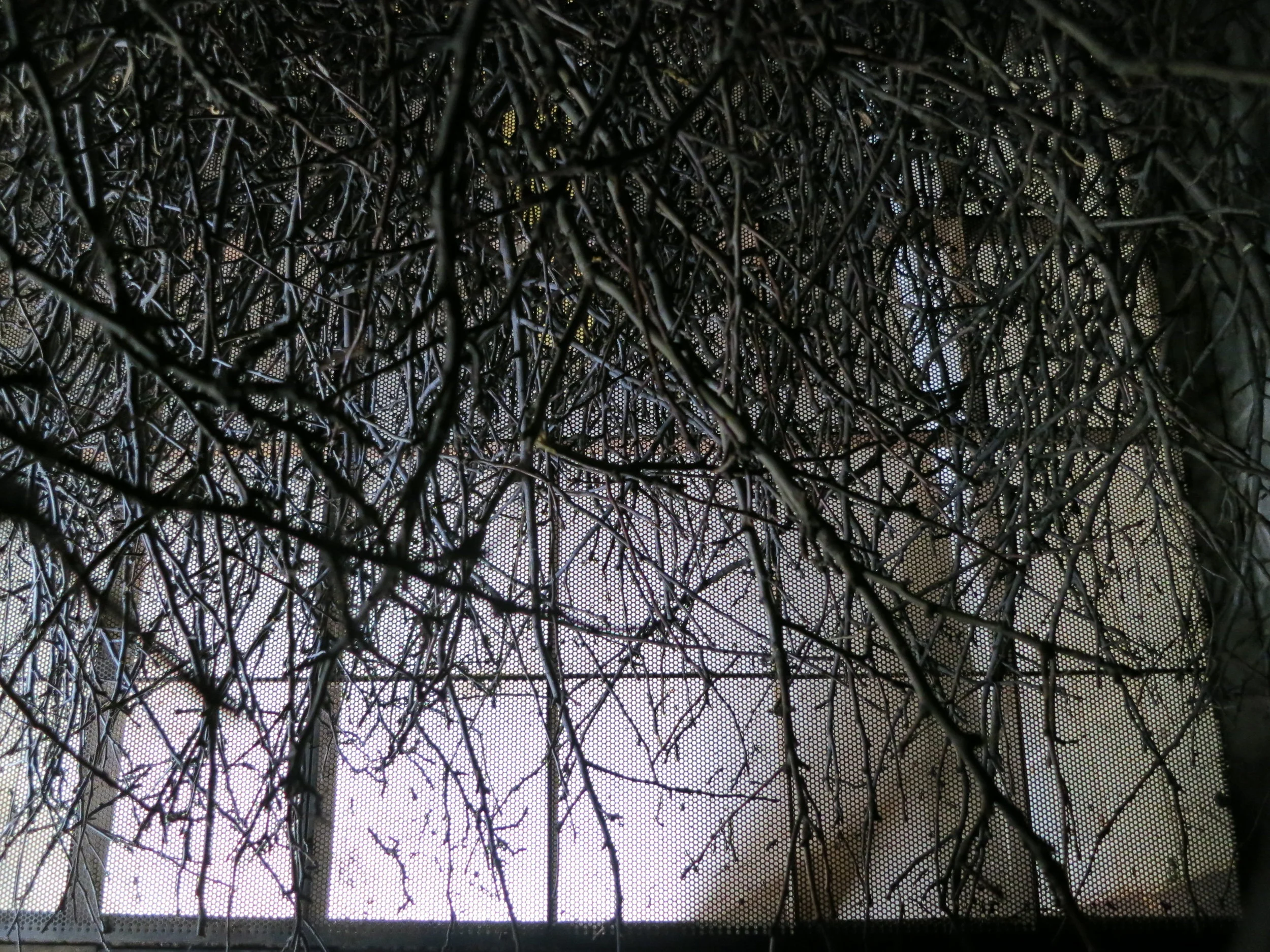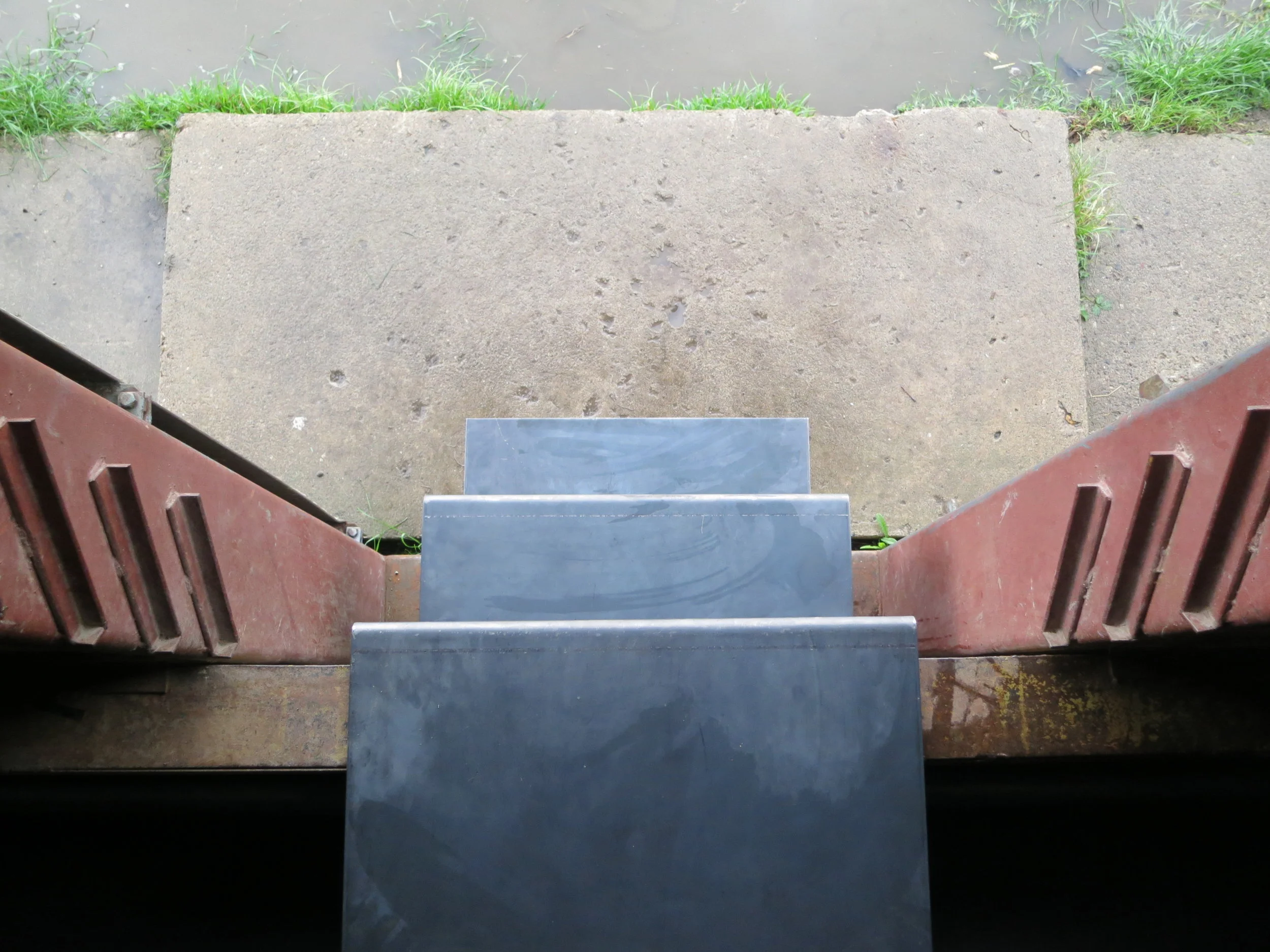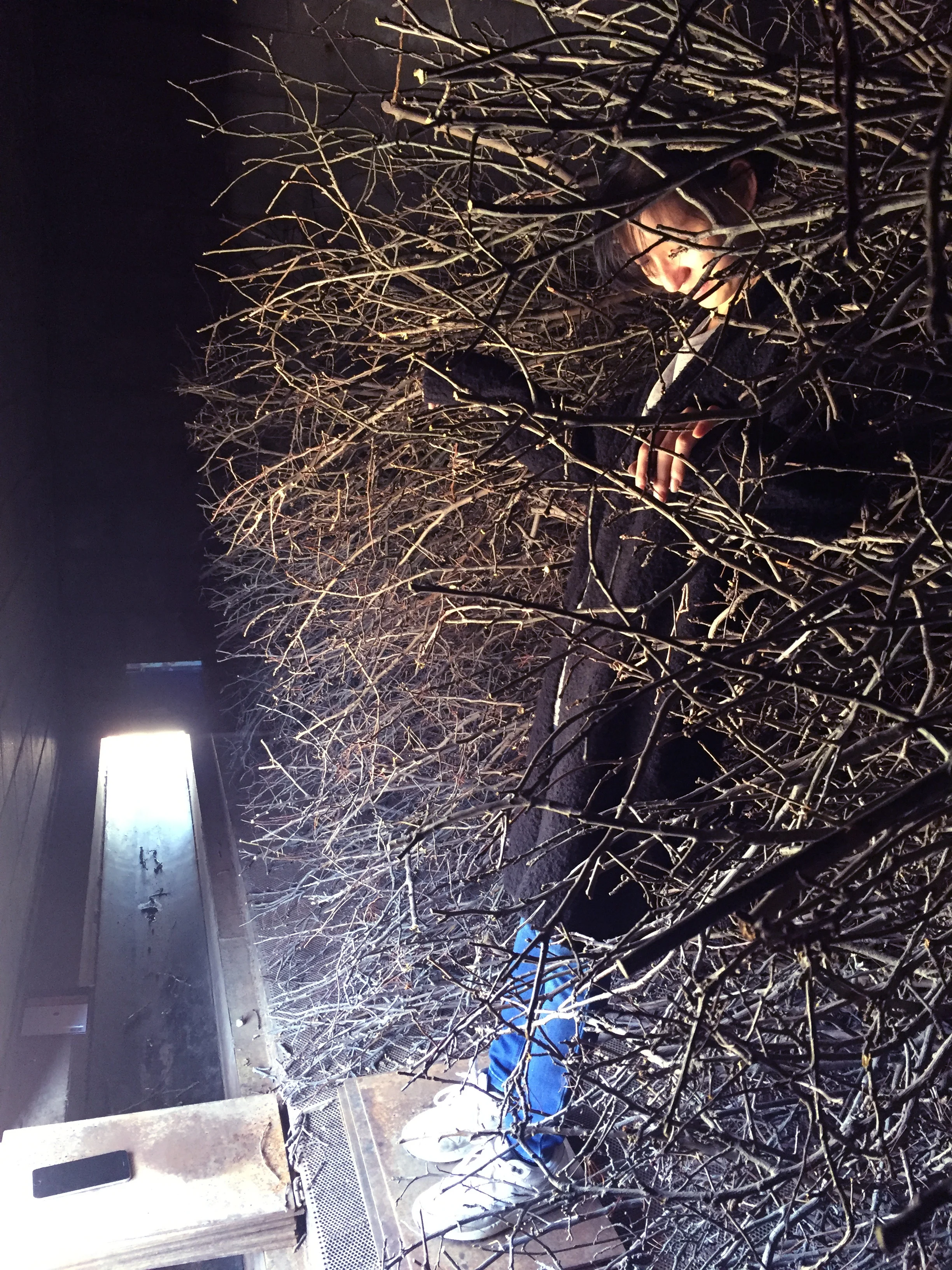





By Alison Brunn | Ryan Carter | Yuxuan Zhou
“A Clearing” is focused on the act of arriving within the installation space. In their existing condition, each of the site’s vacant bins is entered by hoisting oneself up and through a small doorway. Once inside, the occupant stands atop a covered conveyor belt, roughly three feet above the ground. This installation attempts to re-choreograph the experience of entry,occupation, and exit.

By adding material to the bin and reconfiguring some of its components, the project explores how architectural elements might invite a sequence of actions. A folded steel plate cantilevers out from the belt to become a stair, its first tread resting inches above the ground. One enters to find that the bin is filled almost entirely with brush. This filling of the bin, while an echo of its previous function, is an obstruction to the entrant. The proportions of the bin become harder to discern visually through the dense mass of branches. The visitor finds that she can step into this mass, inside a niche that has been carved for her. Steel plates were removed from the conveyor belt and stacked to create a pedestal within the niche. The pedestal marks the endpoint of the axis of entry; a place to stop, to turn around and take an extended pause while enclosed from behind by the mass of branches. The sequence is then performed in reverse as the visitor exits the space.

“In the mirror, I see myself there where I am not, in an unreal, virtual space that opens up behind the surface; I am over there, there where I am not, a sort of shadow that gives visibility to myself, that enables me to see myself where I am absent.” - Michel Foucault

An orchard - a space of agricultural production - provided our material. The installation is composed of trimmings that were discarded in order to bring about new growth.
The pruned branches are assembled within the bin to create a hedge. The chaotic array of trimmings preserved within the drying bin creates a structure that supports itself.
The threshold extends into the pathway; It is a discrete invitation.
The mass of trimmings recedes into a niche. This allows the hedge to embrace the occupant for a tactile experience. A platform emphasizes the solitary quality of this moment.
The hedge engages the peripheral.